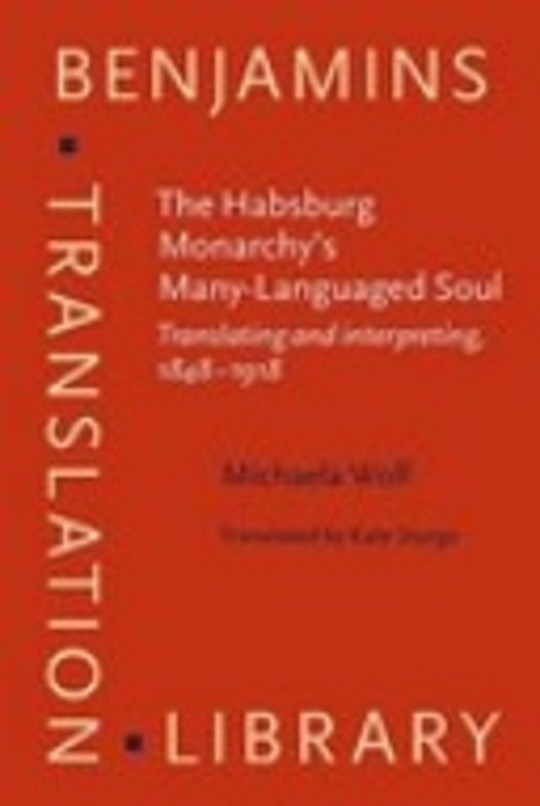
The Habsburg Monarchy’s Many-Languaged Soul
Free
Description
Contents
Reviews
Language
English
ISBN
Unknown
The Habsburg Monarchy’s Many-Languaged Soul
Editorial page
Title page
LCC data
Table of contents
List of figures
List of tables
Introduction
Chapter 1. Locating translation sociologically
1. Scholarship and society in the context of translation
2. Translation studies - “going social”?
Chapter 2. Kakania goes postcolonial
1. Locating “Habsburg culture”
2. The “cultural turn” and its consequences
3. Translation as a contribution to the construction of cultures
4. The concept of “cultural translation”
5. A tentative typology of translations
Polycultural communication and polycultural translation
Transcultural translation
Chapter 3. The Habsburg Babylon
1. The multiculturalism debate, Kakania style
2. Does the state count heads or tongues?
3. Language policy promoting ethnic rapprochement
4. The polylingual book market
Chapter 4. Translation practices in the Habsburg Monarchy’s “great laboratory”
1. Polycultural communication
Habitualized translation
Servants
Craftspeople
Tauschkinder
Institutionalized translation
The ban on compulsory second language use in the classroom
The army as the “great school of multilingualism”
The administration - the Monarchy’s “hall of languages”
2. Polycultural translation
Contact between government offices and the public
Interpreting and translating in court
Sworn court interpreters
Translating in court
Translating legislative texts
The Terminology Commission
The Reichsgesetzblatt Editorial Office
Translation in the Ministry of Foreign Affairs and the Ministry of War
Section for Ciphers and Translating
The Literary Bureau
The Evidence Bureau
General correspondence after the Compromise of 1867
3. The training of dragomans
4. The contribution of translation practices to the construction of cultures
Chapter 5. Theoretical sketch of a Habsburg translational space
Chapter 6. “Promptly, any time of day”: The private translation sector
1. Commercial translation and its institutionalization
2. Battling for positions in the commercial translation sector
Chapter 7. “Profiting the life of the mind”: Translation policy in the Habsburg Monarchy
1. Factors regulating translation policy
Censorship
Copyright
Bookseller licensing
2. State promotion of culture and literature
3. Literary prizes
Chapter 8. “The Habsburg “translating factory”: Translation statistics
1. The bibliographical data
Polycultural translation
Bosnian-Croatian-Serbian
Hungarian
Slovakian
Czech
Slovenian
Polish
Italian
Transcultural translation
French
Portuguese
Spanish (Latin America)
Dutch
Swedish
Icelandic
2. Analyses
3. Translation between obsession and withdrawal
Chapter 9. The mediatory space of Italian-German translations
1. Austrian-Italian perceptions
2. Translations from Italian in the German-speaking area
3. Transformations of the field of translation
Social fields and their rules of operation
Dynamizing the Bourdieusian field
Paratexts - thresholds of the book
Paratext and translation
Paratexts regulating communication
Translators’ paratexts steering reception
The Habsburg space of mediation
Requirements for a history of the Habsburg mediatory space
Before translating begins
Translators - the primary bearers of responsibility for mediation?
“Imposing new values:” Agencies of mediation and distribution
Reception in the Habsburg communication network
4. The translational space of mediation: Conclusions
Conclusion
1. Model: The communicative space of the Habsburg Monarchy
The pluricultural communicative space of the Habsburg Monarchy
Space of polycultural translation
Exogenous cultural field
Space of transcultural translation
2. Kakania as a site of translation
References
Archives
Primary sources
Secondary literature
Appendix
Name index
Subject index
The book hasn't received reviews yet.

